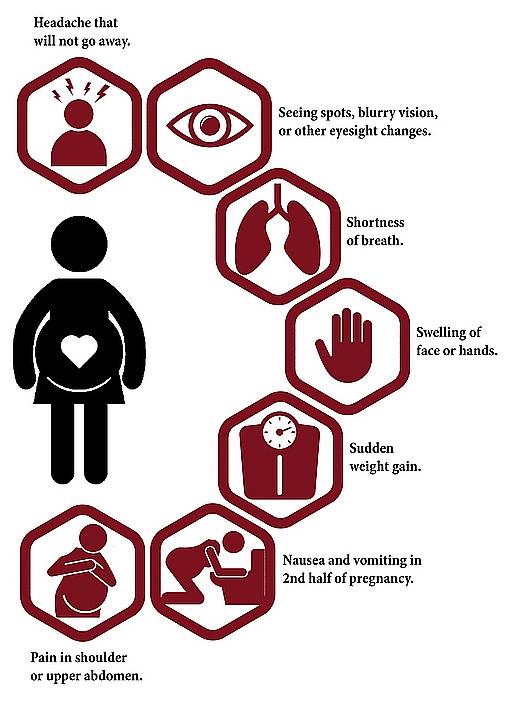-
Home/
- Home
/
- Specialties
/
- Maternity Center


Preeclampsia is a serious disease related to high blood pressure. It can happen to anyone between 20 weeks of pregnancy and 6 weeks after delivery. Many women who get preeclampsia do not have clear risk factors. Talk with your OB/GYN provider right away if you have any of the following symptoms:
Talk with your OB/GYN provider right away if you have any of the following symptoms:
You may need to see your OB/GYN provider earlier and more often after childbirth so they can monitor your health. You should also tell any future health care providers that you had preeclampsia as you may be more likely to have health problems in the future when you are not pregnant including: high blood pressure, heart attack, stroke, or kidney disease.
Why is high blood pressure a problem during pregnancy?
How is preeclampsia diagnosed?
How is preeclampsia treated?
What does preeclampsia do?
If my first pregnancy was normal, can I still develop preeclampsia?
If I had preeclampsia with a previous pregnancy, can I get preeclampsia again?
If you’re planning on becoming pregnant again after experiencing preeclampsia in a previous pregnancy, you may have some concerns. Here is what you can expect.
How can I take my blood pressure at home?
What can I do to help get a more accurate blood pressure reading?
What do blood pressure numbers mean?
What causes postpartum preeclampsia?
Can you get postpartum preeclampsia without having preeclampsia during pregnancy?
When does postpartum preeclampsia occur?
What can I do to prevent or treat postpartum preeclampsia?
I’m experiencing symptoms. I called my healthcare provider, but I haven’t heard back.
I went to the Emergency Room and was sent home, and now I am feeling worse. What should I do?
Call Your Healthcare Provider Right AwayIf you can't reach your healthcare provider, |
|
|---|---|
Have Someone Take You to the ER or Call 911 |
|